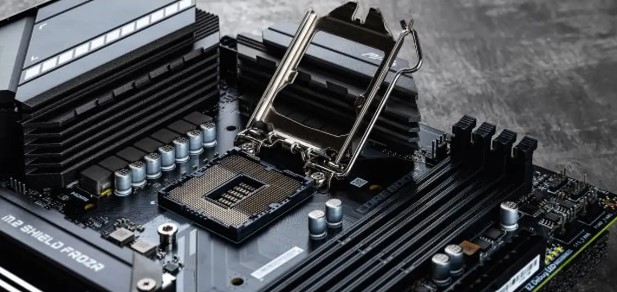The Google Pixel 8 and Pixel 8 Pro are powerful smartphones that offer a range of features and capabilities. One of the key functions of these devices is the ability to enter Fastboot Mode, also known as bootloader mode. This mode allows users to access certain parts of the file system that are normally locked by the OEM, enabling tasks such as unlocking the bootloader, flashing files, and installing custom ROMs. In this article, we will guide you through the step-by-step process of booting your Google Pixel 8 or Pixel 8 Pro into Fastboot Mode.
Fastboot Mode
Before we dive into the process of entering Fastboot Mode, let’s take a moment to understand what it is and why it’s useful. Fastboot Mode is a special boot mode for Android devices that provides deeper access to the device’s file system. It allows users to perform advanced tasks that are not available in normal operating mode. Some of the key functionalities of Fastboot Mode include:
- Unlocking the bootloader: Fastboot Mode allows you to unlock the bootloader of your Google Pixel 8 or Pixel 8 Pro. This is a necessary step if you want to install custom ROMs or modify the system.
- Flashing files: With Fastboot Mode, you can flash specific files onto your device’s partitions. This includes firmware updates, custom recoveries, and other system modifications.
- Accessing Recovery Mode: Fastboot Mode provides an easy way to boot into Recovery Mode, which is used for troubleshooting and performing system maintenance tasks.
- Installing custom ROMs: Fastboot Mode enables you to install custom ROMs on your device, giving you the ability to customize and personalize your Android experience.
Now that we have a clear understanding of Fastboot Mode, let’s proceed with the step-by-step guide on how to boot your Google Pixel 8 or Pixel 8 Pro into this mode.
Step 1: Power off your device
The first step in entering Fastboot Mode is to power off your Google Pixel 8 or Pixel 8 Pro completely. To do this, press and hold the power button until the power menu appears on the screen. From the power menu, select the “Power off” option and wait for the device to shut down.
Step 2: Enter Fastboot Mode
Once your device is powered off, we can proceed with entering Fastboot Mode. To do this, you need to press and hold a specific combination of buttons while the device is booting up. For the Google Pixel 8 and Pixel 8 Pro, the combination is the power button and the volume down button.
Press and hold the power button and the volume down button simultaneously. Keep holding the buttons until you feel a slight vibration from your device. This indicates that the device has entered Fastboot Mode.
Step 3: Navigating Fastboot Mode
When your device boots up in Fastboot Mode, you will see a screen that displays information about the bootloader. This screen does not support touch input, so you will need to navigate using the hardware buttons.
The highlighted option on the top left of the screen indicates the current selection. You can use the volume up or volume down button to change the highlighted option. The power button is used to select the highlighted option.
From the Fastboot Mode screen, you have several options:
- Start: This option allows you to boot back into the Android operating system.
- Power off: Selecting this option will power off your device.
- Barcode: This option displays barcode details, including the IMEI number, serial number, and SKU number.
- Rescue mode: This option boots your device into rescue mode, which is used for advanced troubleshooting.
- Recovery mode: Selecting this option will boot your device into Recovery Mode.
- Restart bootloader: This option restarts the bootloader of your device.
To navigate through these options, use the volume buttons to highlight the desired option and press the power button to select it.
Step 4: Exiting Fastboot Mode
To exit Fastboot Mode and boot directly into the Android operating system, ensure that the “Start” option is highlighted on the Fastboot Mode screen. Press the power button to select the option.
Your device will go through the boot process and display the Google logo and boot animation. If everything is functioning properly, your device will boot back into Android as usual.
If you encounter any issues during the boot process and are unable to boot into Android, it may be due to file system corruption. In such cases, you can try reverting any recent changes you made to the operating system or perform a factory data reset to restore the Android operating system.
Conclusion
In this article, we have provided a step-by-step guide on how to boot your Google Pixel 8 or Pixel 8 Pro into Fastboot Mode. This mode allows you to perform advanced tasks such as unlocking the bootloader, flashing files, and installing custom ROMs. By following the instructions outlined in this guide, you can easily access Fastboot Mode and explore the various capabilities it offers.
If you have any further questions or need assistance with any other aspects of your Google Pixel 8 or Pixel 8 Pro, feel free to leave a comment below. We are here to help you make the most of your device and ensure a smooth and enjoyable Android experience.
Additional Information: If you prefer to enter Fastboot Mode using the ADB command via your PC, please let us know in the comments. If there is enough demand for it, we will create a separate guide to walk you through the process.
Experiencing difficulties with your Device, check out our “How To” page on how to resolve some of these issues.








2 comments